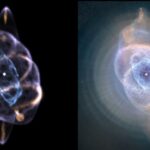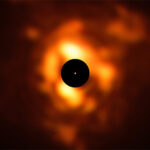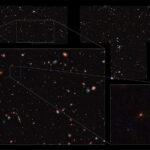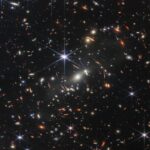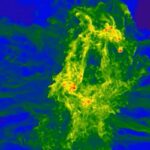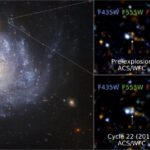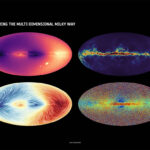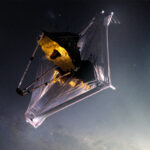NASA Confirms DART Mission Impact Changed Asteroid’s Motion in Space
Versão portuguesa disponível aqui Analysis of data obtained over the past two weeks by NASA’s Double Asteroid Redirection Test (DART) investigation team shows the spacecraft's kinetic impact with its target asteroid, Dimorphos, successfully altered the asteroid’s orbit. This marks humanity’s first time purposely changing the motion of a celestial object…
Cat’s Eye Nebula seen in 3D
Versão portuguesa disponível aqui Researchers have created the first computer-generated three-dimensional model of the Cat's Eye Nebula, revealing a pair of symmetric rings encircling the nebula’s outer shell. The rings’ symmetry suggests they were formed by a precessing jet, providing strong evidence for a binary star at the centre of…
Webb takes its first exoplanet image
Versão portuguesa disponível aqui For the first time, astronomers have used the NASA/ESA/CSA James Webb Space Telescope to take a direct image of an exoplanet. The exoplanet is a gas giant, meaning it has no rocky surface and could not be habitable. The image, as seen through four different light filters,…
One of the brightest stars in the sky is evolving and dying before our eyes
Versão portuguesa disponível aqui Nothing lasts forever, including the stars in our night sky. One of the brighter and more notable stars in our sky is Betelgeuse, the bright red supergiant in the shoulder of Orion. Infrared light emitted by dust around Betelgeuse in December 2019. Credit: ESO/P. Kervella/M. Montargès…
Wide View of Early Universe Hints at Galaxy Among the Earliest Ever Detected
Versão portuguesa disponível aqui Two new images from NASA’s James Webb Space Telescope show what may be among the earliest galaxies ever observed. Both images include objects from more than 13 billion years ago, and one offers a much wider field of view than Webb’s First Deep Field image, which…
How the James Webb Space Telescope lets us see the first galaxies in the universe
Versão portuguesa disponível aqui It has been an exciting week with the release of breathtaking photos of our universe by the James Webb Space Telescope (JWST). Images such as the one below give us a chance to see faint distant galaxies as they were more than 13 billion years ago.…
Scientists discover how first quasars in universe formed
Versão portuguesa disponível aqui The mystery of how the first quasars in the universe formed - something that has baffled scientists for nearly 20 years - has now been solved by a team of astrophysicists whose findings are published in Nature. The existence of over 200 quasars powered by supermassive…
The Star That Survived a Supernova
Versão portuguesa disponível aqui A supernova is the catastrophic explosion of a star. Thermonuclear supernovae, in particular, signal the complete destruction of a white dwarf star, leaving nothing behind. At least that’s what models and observations suggested. So when a team of astronomers went to look at the site of…
ESA’s Gaia mission released new data
Versão portuguesa disponível On June 13th, ESA's Gaia mission released its new treasure trove of data about our home galaxy. Astronomers describe strange ‘starquakes’, stellar DNA, asymmetric motions and other fascinating insights in this most detailed Milky Way survey to date. Gaia is ESA’s mission to create the most accurate…
First Images From NASA’s Webb Space Telescope Coming Soon
Versão Portuguesa 🇵🇹 NASA’s James Webb Space Telescope, a partnership with ESA (European Space Agency) and the Canadian Space Agency (CSA), will release its first full-color images and spectroscopic data on July 12, 2022. As the largest and most complex observatory ever launched into space, Webb has been going through…


